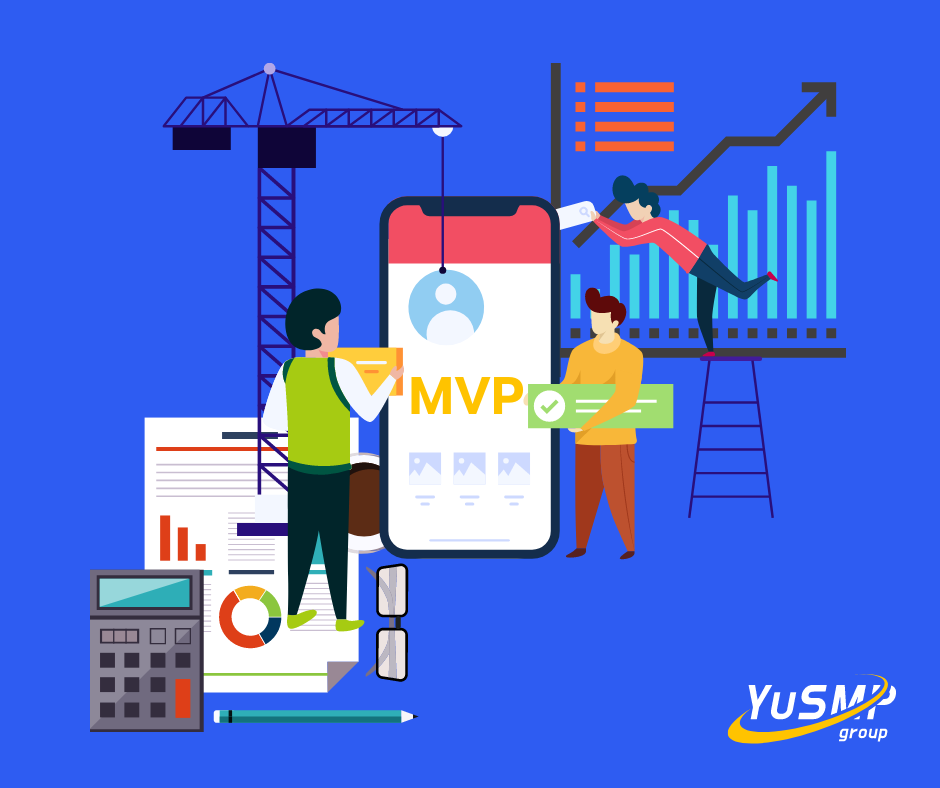In the previous article, we analyzed the concept of a minimum viable product and revealed its potential benefits. In this article, we will deal with MVP even more deeply: we will look at how to build a plan, show the stages of development and talk about the cost.

How can an MVP be built? Detailed plan
MVP, like a full-fledged product, needs preliminary analysis and planning. We have listed a few points that will help make the development process easier and more understandable for all participants.
Find the problem you need to solve
No one should develop a mobile app just for the sake of having it — it's important to cover up the pain and needs. Therefore, it is necessary to analyze the audience. Conduct a survey, analyze the responses, and highlight the key product features that will solve the users ' problems.
Think about your target users
Your target audience is not everyone. Perhaps the advice to accurately identify target users has already become a nuisance, but still, the definition of the target audience remains an important part of any project. Which, by the way, is often neglected.
Draw custom paths
When you know what your customers want, you can plan custom paths. These are virtual trails that people will follow from the moment they open the mobile app to the finish line, where their problem will be solved. To create functions that work properly, you need to know every step of the way. In this way, you create a positive and practical user experience.
Decide on the minimum set of functions and form
We already talked about the set of functions and the form using the example of eclair in the last article. But repetition is the mother of learning.
At the initial stage, it will be necessary to allocate a minimum number of functions that carry the main value of the product. Here we also determine the technologies and the form of the application (mobile or web, native or cross-platform). Usually, one or two functions are more than enough to collect feedback and evaluate the perception of your product.
Stages of MVP application development
Let's go to the technical part and see exactly what you need to do to create an MVP.
The process is similar to app development, so we start with UX / UI design to create the visual side of the product and highlight all the interactions with the features.
After that, we move on to back-end development, where all the databases are configured. This layer is responsible for data processing and is invisible to the final target user, but it is extremely important to ensure that all components interact correctly. After completing this stage, we move on to front-end development, which is responsible for the external part of the application. It is with her that the client will contact directly.
Depending on the technology you choose and the type of MVP, these stages may require different amounts of time and resources.
Automatic and manual testing occurs throughout development to make sure everything works correctly. Towards the end, the intensity of the tests increases. All functions must be functional for your MVP product to complete its task.
How much does MVP development cost?
Undoubtedly, creating an MVP is cheaper than developing a full-fledged mobile app. That's why it's reasonable to invest in this product — to save money by learning everything you need to know about the market and target users. This makes it possible to refine the idea so that you can later create the perfect app.
No one can say in advance exactly how much your MVP will cost. Its cost is always influenced by many factors: the vision of the product owner, the number of features, the technology used, and the development time.
The MVP is ready. What's next?
So, the MVP is released, but it's too early to relax. Now it is important to monitor the market and collect feedback because this is the main goal of this product.
Based on the opinions of the first users, you will find out whether the assumptions about the project are correct. At this stage, unexpected ideas and solutions often arise, which are suggested by user feedback.
We have the first results. Now we begin to develop the product: we make adjustments and refine the application. Here it becomes obvious in which direction to move further.
What if the product idea is completely wrong?
With MVP, there are three possible scenarios:
- The idea is confirmed, and you can continue working on the product.
- The idea is not perfect — it has its pros and cons, which need to be adjusted.
- The idea gets only negative reviews — it seems that the target audience does not appreciate the proposed product concept.
What to do? Definitely don't give up! You may think it's over and there's nothing you can do about it. But that's not true. Once again analyze the market, find out how competition thrives, and come up with new ideas. This can be frustrating and will cost you time and money, but if you are serious about running a business or starting a startup — you will learn from this experience, and each time you stick to a new concept, you will become better.
If you need a product consultant — we have experienced specialists. Sometimes it is necessary to test multiple MVPs before finding the right path to success.